Home education allows flexibility, but sometimes we have to change the way we teach special kids by turning towards unconventional methods. I gave grades to my older children because they attended school before we began homeschooling. They liked grades, and they liked knowing where they stood, so we stayed with the system. However, Andrew (13) is my special learner. I don’t do grades. In fact, I don’t do grade levels either. Our subjects are taught on his level of understanding. Most subjects are on-target at the Jr. High level, but Prader-Willi Syndrome has given Andrew some hurdles – like the concept of math and art.

Art – An Unexpected Hurdle
If you had to guess our two difficult classes, art was probably not one of your top ten guesses. But for whatever reason, no matter how much OT we do, brain to eye coordination is difficult. Sometimes I can’t tell if it is just a ‘boy-thing’, sort of a, I-couldn’t-care-less-if-my-square-looks-like-a-square type attitude. The fact remains, art has not progressed since our early elementary days. Andrew does better if I sit next to him and describe what to draw. He colors perfectly – the problem lies with the drawing. One of our 2020 goals is to study art history, and the techniques that past painters used. I am hoping that this unconventional method might help Andrew progress.
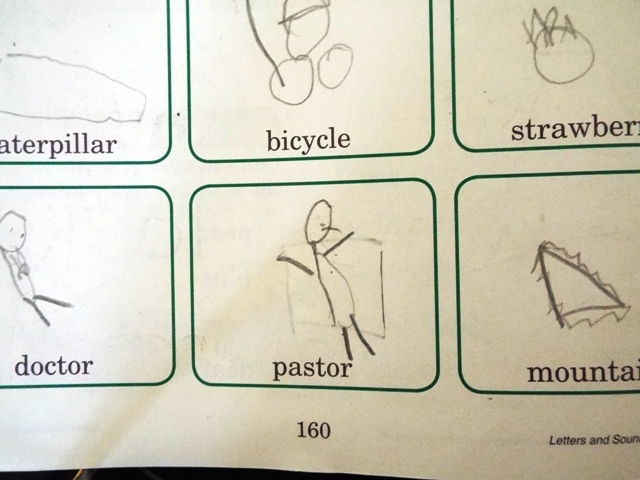
Math – an Expected Hurdle
When Andrew was an infant, I volunteered for our state’s Prader-Willi syndrome chapter. I heard our members talked about their adult PWS children and how they lacked the concept of time and numbers. I didn’t realize it, but even then, I was formulating how to teach conceptual math. When I decided to homeschool Andrew, at age 3, I decided to approach math differently. If I helped Andrew build a solid foundation of basic math skills, how far would I be able to take his understanding?
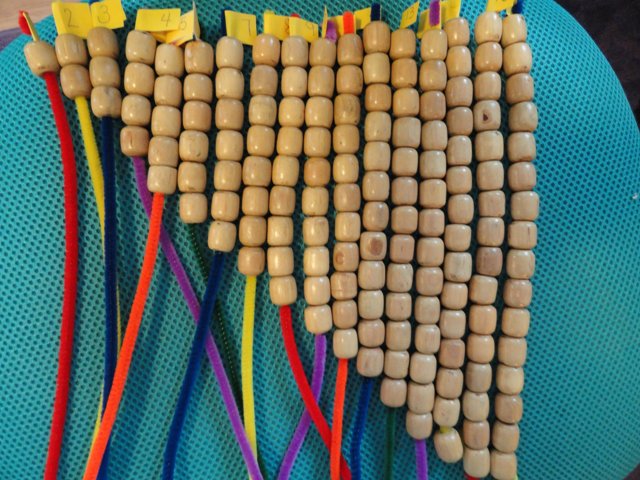
was also good practice for fine motor skills.
Counting and the Basics
In the beginning, we did a lot of counting. There were days I didn’t think we would ever learn to count. Andrew recognized numbers, he could write numbers, but I knew that he had no visualization of the amounts. The basis of the concept was missing. I kept trying a multitude of manipulatives and games. Finally, we reached the moment (about 3 years later) where I felt sure that Andrew understood that 10 was bigger than 4. By first grade, it was time for a math workbook.
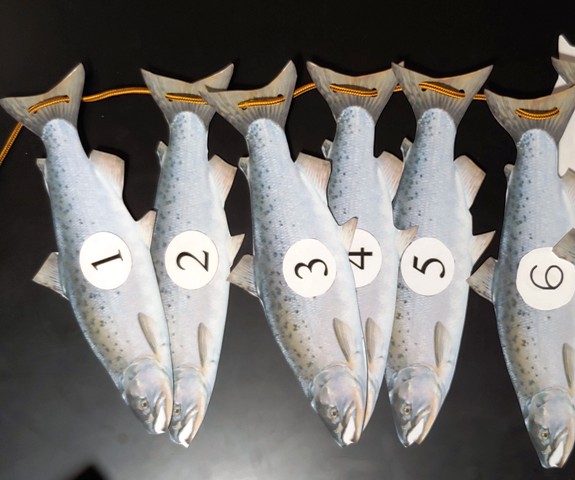
Who knew salmon could be so diverse!
A Passage of Rite – Our First Math Workbook
I had high standards for our first math book. I wanted extra white space so that it looked less overwhelming, plus Andrew wrote BIG numbers. I also wanted ‘white’ pages, not the recycled look, and I wanted colors. Lots of colors! I finally chose Horizon Math. It met all the standards that I felt was important. But I was soon to learn that special learners bring special problems to the desk.
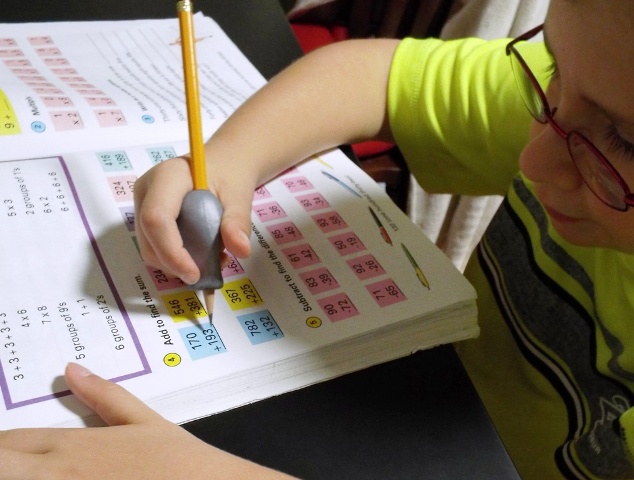
The Spiral Concept Issue
Our new workbook posed an issue that I had never thought of. My older kids were not special learners so I had no idea the new homeschool adventures that awaited me. Most math books use a spiral concept, meaning concepts are introduced, but not revisited again until many pages later. It quickly became clear that Andrew was not retaining what he had learned previously. He needed more time and effort on one concept before adding a lot of other information. As Andrew’s mental file cabinet overloaded it frustrated for both of us.

STOP and Regroup
I had my own learning to do. As my frustration mounted, so did Andrew’s. Loosing my cool was not ‘cool’ and it did nothing for the Andrew’s confidence, nor my stress level. Words of wisdom given to me and I share: when the frustrations escalate, STOP. Walk away and find something else to do…. Thankfully, another special needs homeschool mom warned me that escalating tensions can lead to the ramifications of belittling, using peer comparisons, and shouting matches. None are worth the mental anguish caused, nor is it productive.
Unit Math – Catering to the Special Learner
This same mom, suggested I try to do math in units. I was willing to try anything. First grade math class, took a new direction and focused only on one unit – adding numbers. Games, flash cards, card games – it was all about addition. It was also scary, because I felt like we were getting behind other first graders.
Parental guilt awaits around every corner. Don’t let it phase you! Every child is different and that is what homeschooling is all about – catering to differences!
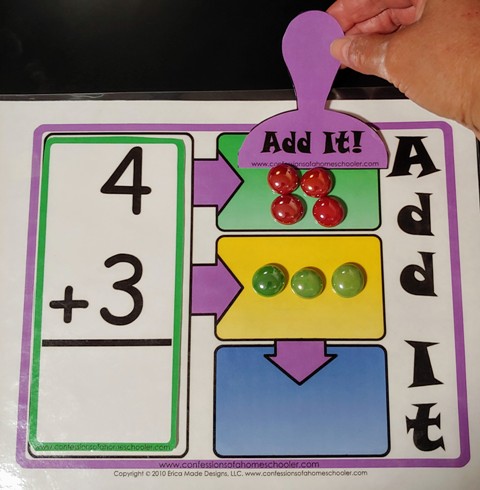
in Erica’s free printables section.
Firm Foundations
To keep our momentum going, I posted a large addition table on our wall right in front of the school table, so that Andrew could see what addition columns he had completed. When Andrew completed one set of addition facts and knew them inside and out, he got to color the column. This was a good visual and a confidence builder because he could see his accomplishments and know how many more he needed to do.
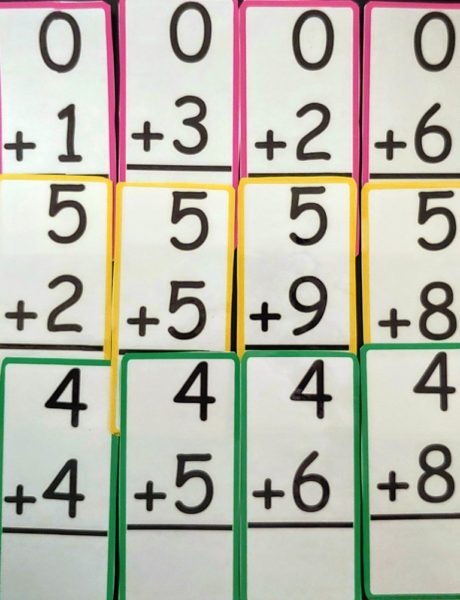
from the free printables at Confession of a Homeschooler.
Once Andrew had addition facts memorized, I did the same with subtraction, and multiplication. Now, when I look back, I am grateful that I took the advice given. Andrew has a firm foundation in the basics. Math is still not our easiest or favorite subject, but because Andrew can quickly compute basic math facts, the changes we made so long ago has paved the way to learning new concepts.
Unconventional Use of a Workbook
I still like Horizon Math and it remains part of our homeschool schedule. However, instead of working page by page, I purchase three grades at a time, and assign just the sections that correspond with our current study unit.

Looking Forward
In all honesty, as Andrew has aged, and I realize that adulthood is right around the corner, our goals are beginning to change. I find myself questioning what math skills Andrew will need as an adult, and I keep thinking it might be time to consider Consumer Math. Because I am catering to the special learner, I am not so certain that Algebra and Geometry are necessary. Time will tell!
We love comments and questions! What unconventional methods have you used to teach math?
Don’t forget to sign up for our monthly newsletter!


